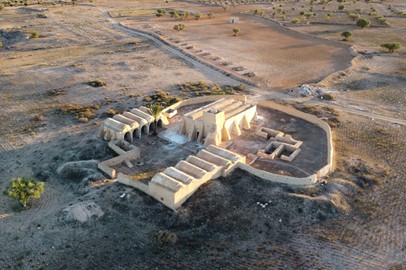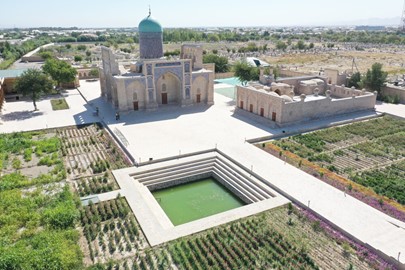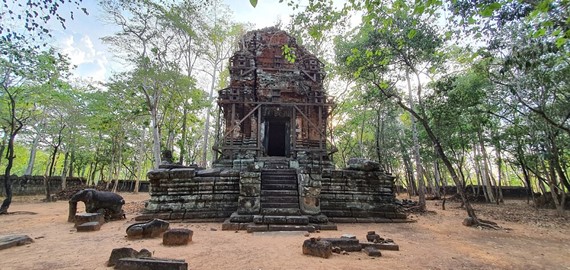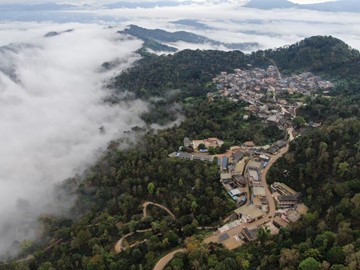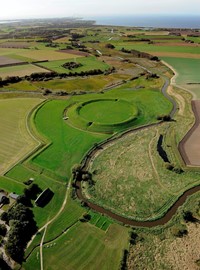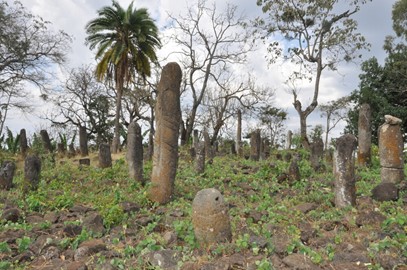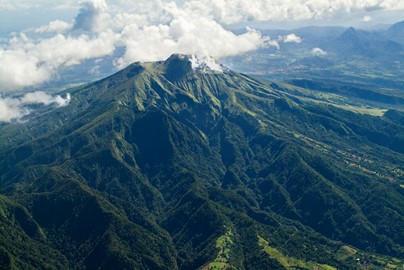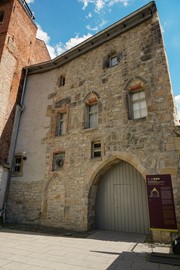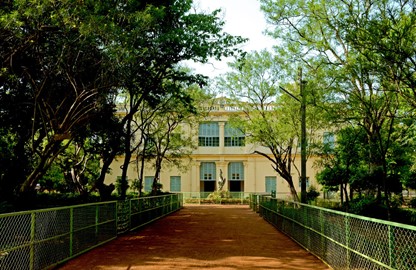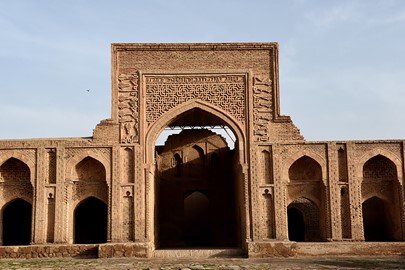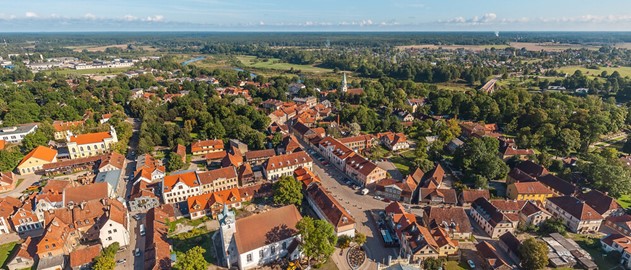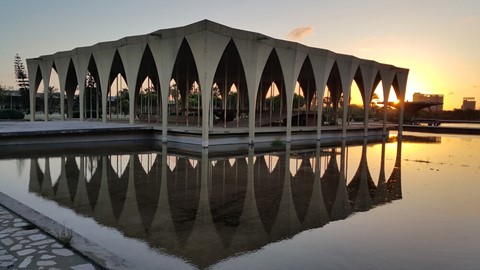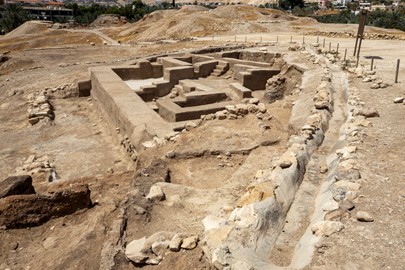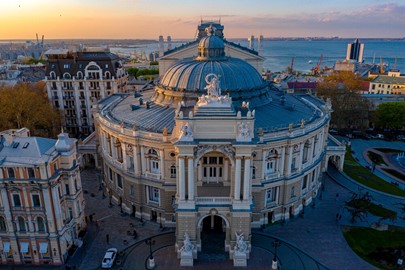what's new
Djerba
This serial property is a testimony to a settlement pattern that developed on the island of Djerba around the 9th century CE amidst the semi-dry and water-scarce environment. Low‑density was its key characteristic: it involved the division of the island into neighbourhoods, clustered together, that were economically self-sustainable, connected to each other and to the religious and trading places of the island, through a complex network of roads. Resulting from a mixture of environmental, socio-cultural and... Read More
Gordion
Located in an open rural landscape, the archaeological site of Gordion is a multi-layered ancient settlement, encompassing the remains of the ancient capital of Phrygia, an Iron Age independent kingdom. The key elements of this archaeological site include the Citadel Mound, the Lower Town, the Outer Town and Fortifications, and several burial mounds and tumuli with their surrounding landscape. Archaeological excavations and research have revealed a wealth of remains that document construction techniques, sp... Read More
Silk Roads: Zarafshan Karakum Corridor
The Zarafshan-Karakum Corridor is a key section of the Silk Roads in Central Asia that connects other corridors from all directions. Located in rugged mountains, fertile river valleys, and uninhabitable desert, the 866-kilometre corridor runs from east to west along the Zarafshan River and further southwest following the ancient caravan roads crossing the Karakum Desert to the Merv Oasis. Channelling much of the east-west exchange along the Silk Roads from the 2nd century BCE to the 16th century CE, a large... Read More
Koh Ker
The archaeological site of Koh Ker is a sacred urban ensemble of numerous temples and sanctuaries including sculptures, inscriptions, wall paintings, and archaeological remains. Constructed over a twenty-three-year period, it was one of two rival Khmer Empire capitals – the other being Angkor – and was the sole capital from 928 to 944 CE. Established by King Jayavarman IV, his sacred city was believed to be laid out on the basis of ancient Indian religious concepts of the universe. The new city demonstrated... Read More
Tr’ondek Klondike
Located along the Yukon River in the sub-arctic region of Northwest Canada, Tr’ondëk-Klondike lies within the homeland of the Tr’ondëk Hwëch’in First Nation. It contains archaeological and historic sources that reflect Indigenous people’s adaptation to unprecedented changes caused by the Klondike Gold Rush at the end of the 19th century. The series illustrates different aspects of the colonization of this area, including sites of exchange between the Indigenous population and the colonists, and sites demons... Read More
Tea Forests of the Jingmai Mountain
Located on Jingmai Mountain in southwestern China, this cultural landscape was developed over a thousand years by the Blang and Dai peoples following practices that began in the 10th century. The property is a tea production area comprised of traditional villages within old tea groves surrounded by forests and tea plantations. The traditional understorey cultivation of old tea trees is a method that responds to the specific conditions of the mountain’s ecosystem and subtropical monsoon climate, combined wit... Read More
Odzala Kokoua
This property is an excellent example, at an exceptionally large-scale, of the process of post-glacial forest recolonization of savanna ecosystems. It is therefore ecologically significant as a convergence point of multiple ecosystem types (Congolese Forest, Lower Guinean Forest and Savanna). The broad range of age classifications across the forest succession spectrum contributes to the park’s highly distinct ecology, incorporating a broad range of remarkable ecological processes. It is one of the most impo... Read More
Viking Age Ring Fortresses
These five archaeological sites comprise a system of monumental ring-shaped Viking-Age fortresses sharing a uniform geometric design. Constructed between about 970 and 980 CE, the fortresses at Aggersborg, Fyrkat, Nonnebakken, Trelleborg and Borgring were positioned strategically near important land and sea routes, and each made use of the natural topography of their surrounding landscape for defensive purposes. They are an emblematic demonstration of the centralized power of the Jelling Dynasty, and a test... Read More
Gedeo Cultural Landscape
The property lies along the eastern edge of the Main Ethiopian Rift, on the steep escarpments of the Ethiopian highlands. An area of agroforestry, it utilizes multilayer cultivation with large trees sheltering indigenous enset, the main food crop, under which grow coffee and other shrubs. The area is densely populated by the Gedeo people whose traditional knowledge support local forest management. Within the cultivated mountain slopes are sacred forests traditionally used by local communities for rituals as... Read More
Volcanoes and Forests of Northern Martinique
The global significance of Mount Pelée and Pitons du Carbet is based on its representation of volcanic features, materials and processes. The 1902-1905 eruption is considered a key event for the history of volcanology causing a dramatic impact on St. Pierre town, resulting in a tragic loss of life, and a legacy that remains part of the culture of Martinique. The serial property is home to globally threatened species such as the Martinique Volcano Frog (Allobates chalcopis), the Lacépède’s Ground Snake ... Read More
Jewish Medieval Heritage of Erfurt
Located in the medieval historic centre of Erfurt, the capital city of Thuringia, the property comprises three monuments: the Old Synagogue, the Mikveh, and the Stone House. They illustrate the life of the local Jewish community and its coexistence with a Christian majority in Central Europe during the Middle Ages, between the end of the 11th and the mid-14th century.
Santiniketan
Established in rural West Bengal in 1901 by the renowned poet and philosopher Rabindranath Tagore, Santiniketan was a residential school and centre for art based on ancient Indian traditions and a vision of the unity of humanity transcending religious and cultural boundaries. A ‘world university’ was established at Santiniketan in 1921, recognizing the unity of humanity or “Visva Bharati”. Distinct from the prevailing British colonial architectural orientations of the early 20th century and of European mode... Read More
Persian Caravanserai
Caravanserais were roadside inns, providing shelter, food and water for caravans, pilgrims and other travellers. The routes and the locations of the caravanserais were determined by the presence of water, geographical conditions and security concerns. The fifty-six caravanserais of the property are only a small percentage of the numerous caravanserais built along the ancient roads of Iran. They are considered to be the most influential and valuable examples of the caravanserais of Iran, revealing a wide ran... Read More
Kuldiga
Located in the western part of Latvia, the town of Kuldīga is an exceptionally well-preserved example of a traditional urban settlement, which developed from a small medieval hamlet into an important administrative centre of the Duchy of Courland and Semigallia between the 16th and 18th centuries. The town structure of Kuldīga has largely retained the street layout of that period, and includes traditional log architecture as well as foreign-influenced styles that illustrate the rich exchange between local a... Read More
Rachid Karami International Fair Tripoli
Located in northern Lebanon, the Rachid Karameh International Fair of Tripoli was designed in 1962 by the Brazilian architect Oscar Niemeyer on a 70-hectare site located between the historic centre of Tripoli and the Al Mina port. The main building of the fair consists of a huge covered hall in the shape of a boomerang of 750 metres by 70 metres, a flexible space for countries to install exhibitions. The fair was the flagship project of Lebanon's modernization policy in the 1960s. The close collaborati... Read More
Deer Stone Monuments
Located on the slopes of the Khangai Ridge in central Mongolia, these deer stones were used for ceremonial and funerary practices. Dating from about 1200 to 600 BCE, they stand up to four metres tall and are set directly in the ground as single standing stones or in groups, and are almost always located in complexes that include large burial mounds called khirgisüürs and sacrificial altars. Covered with highly stylized or representational engravings of stags, deer stones are the most important surviving... Read More
Gaya Tumuli
This serial property includes archaeological cemetery sites with burial mounds attributed to the Gaya Confederacy, which developed in the southern part of the Korean Peninsula from the 1st to the 6th century CE. Through their geographical distribution and landscape characteristics, types of burials, and grave goods, the cemeteries attest to the distinctive Gaya political system in which polities existed as autonomous political equals while sharing cultural commonalities. The introduction of new forms of tom... Read More
Jericho
Located in the Jordan Valley, the property is an oval-shaped tell, or mound, that contains the prehistorical deposits of human activity, and includes the adjacent perennial spring of ‘Ain es-Sultan. A permanent settlement had emerged here by the 9th to 8th millennium BC, due to the fertile soil of the oasis and easy access to water. Skulls and statues found on the site testify to cultic practices amongst the Neolithic populations living there, and the Early Bronze Age archaeological material shows signs of ... Read More
Odesa
The Historic Center of Odesa, part of the Black Sea port city developed on the site of Khadzhybei, is a densely built-up area, planned according to classicism canons, characterized by two- to four-storey buildings and wide perpendicular streets lined with trees. Historic buildings reflect the rapid economic development of the city in the 19th and early 20th centuries. The site includes theatres, bridges, monuments, religious buildings, schools, private palaces and tenement houses, clubs, hotels, banks, shop... Read More
Ancient Kingdom of Saba
The Landmarks of the Ancient Kingdom of Saba, Marib, is a serial property comprising seven archaeological sites that bear witness to the rich Kingdom of Saba and its architectural, aesthetic and technological achievements from the 1st millennium BCE to the arrival of Islam around 630 CE. They bear witness to the complex centralized administration of the Kingdom when it controlled much of the incense route across the Arabian Peninsula, playing a key role in the wider network of cultural exchange fostered by ... Read More
